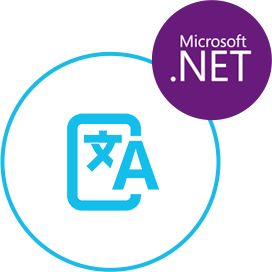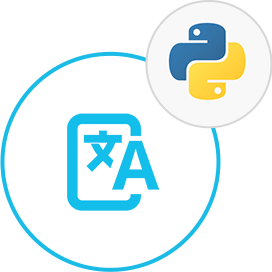Lithuanian to English Translation Using GroupDocs.Translation Cloud API in Java
GroupDocs.Translation Cloud API is a platform that enables developers to integrate translation capabilities into their Java applications. With a focus on Lithuanian to English translation, developers can easily leverage the API's powerful translation engine to accurately and efficiently translate text from Lithuanian to English. The API provides a seamless integration process, allowing developers to easily incorporate translation functionality into their Java applications, saving time and effort in the translation process. With extensive documentation and support, GroupDocs.Translation Cloud API simplifies the translation workflow, making it an essential tool for developers looking to provide multilingual support in their applications.
// Get your App SID, App Key and Storage Name at https://dashboard.groupdocs.cloud (free registration is required).
public TextResponse TranslateText(Configuration conf)
{
string pair = "lt-en";
string text = "Lithuanian to English Translation Using GroupDocs.Translation Cloud API in Java";
TranslationApi api = new TranslationApi(conf);
TranslateTextRequest request = api.CreateTextRequest(pair, text);
TextResponse response = api.RunTranslationTextTask(request);
return response;
}# Get your App SID, App Key and Storage Name at https://dashboard.groupdocs.cloud (free registration is required).
curl -X POST "https://api.groupdocs.cloud/v1.0/translation/text" \
-H "Authorization: Bearer TOKEN" \
-H "Content-Type: application/json" \
-d '[{"pair":"lt-en", "text":"Lithuanian to English Translation Using GroupDocs.Translation Cloud API in Java"}]'
# and response
{ "status":"ok", "message":"Text translated successfully", "translation":"....." }// Get your App SID, App Key and Storage Name at https://dashboard.groupdocs.cloud (free registration is required).
import com.GroupDocs.translate.api.*;
import com.GroupDocs.translate.Configuration;
private static void setUpConfig() throws Exception {
Configuration.setAPP_SID("XXXXXXXX-XXXX-XXXX-XXXX-XXXXXXXXXXXX");
Configuration.setAPI_KEY("XXXXXXXXXXXXXXXXXXXXXXXXXXXXXXXX");
}
static String TranslateText() {
pair = "lt-en";
text = "Lithuanian to English Translation Using GroupDocs.Translation Cloud API in Java";
TextInfo textInfo = new TextInfo(pair, text);
TranslationTextRequest translationTextRequest = new TranslationTextRequest(TextInfo.toString());
TranslationTextResponse translateTextResponse = TranslationApi.TranslateText(translationTextRequest);
return translateTextResponse.translation;
}# Get your App SID, App Key and Storage Name at https://dashboard.groupdocs.cloud (free registration is required).
from groupdocstranslationcloud.configuration import Configuration
from groupdocstranslationcloud.api.translation_api import TranslationApi
from groupdocstranslationcloud.models.translate_text import TranslateText
from groupdocstranslationcloud.models.translate_document import TranslateDocument
# enter valid apiKey and appSid
configuration = Configuration(apiKey="", appSid="")
api = TranslationApi(configuration)
pair = "lt-en"
text = "Lithuanian to English Translation Using GroupDocs.Translation Cloud API in Java"
translator = TranslateText(pair, text)
response = translator.to_string()
res_text = api.post_translate_text(response)
print(res_text.translation)
Features
Lithuanian to English Translation
GroupDocs.Translation Cloud provides a powerful and flexible API for translating Lithuanian text to English. Users can easily integrate the API into their Java applications and utilize its features for seamless translation of large volumes of text or documents.
Automatic Translation
The API offers automatic translation of Lithuanian text to English, allowing users to simply input the text in Lithuanian and receive the translated output in English without the need for manual intervention.
Customization Options
Users can customize the translation process by specifying additional parameters such as domain-specific terminology, style, or tone to ensure that the translated output meets specific requirements or industry standards.
Support for Document Translation
GroupDocs.Translation Cloud supports the translation of various types of documents, including PDFs, Word files, and more. Users can extract text from these documents, translate it from Lithuanian to English, and seamlessly generate translated documents as output.
Support for Multiple Languages
In addition to Lithuanian to English translation, the API also supports translation between a wide range of languages, allowing users to achieve multilingual translation capabilities within their Java applications.
Frequently Asked Questions
How can I initiate a Lithuanian to English translation using GroupDocs.Translation Cloud in Java?
To initiate a Lithuanian to English translation in Java using GroupDocs.Translation Cloud, you can use the provided SDK or API to send a request with the source text in Lithuanian and specify the target language as English.
Are there any specific requirements for integrating GroupDocs.Translation Cloud for Lithuanian to English translation in a Java application?
In order to integrate GroupDocs.Translation Cloud for Lithuanian to English translation in a Java application, you would need to ensure that you have the necessary credentials and access to the API, as well as the ability to make HTTP requests from your Java application.
Can I customize the translation process for Lithuanian to English translation using GroupDocs.Translation Cloud in Java?
Yes, GroupDocs.Translation Cloud allows for customization of the translation process in Java. You can specify options such as preserving the formatting, including or excluding specific content, and handling specific terminology or language nuances during the translation.



